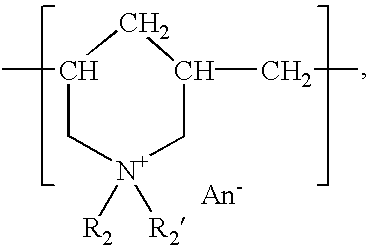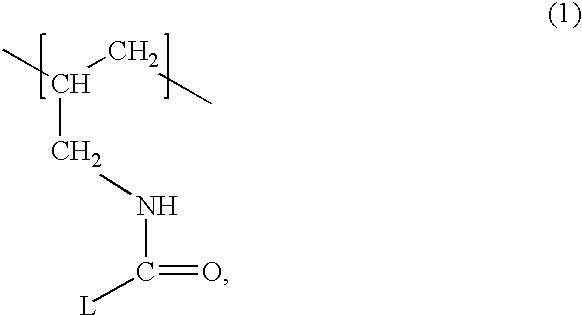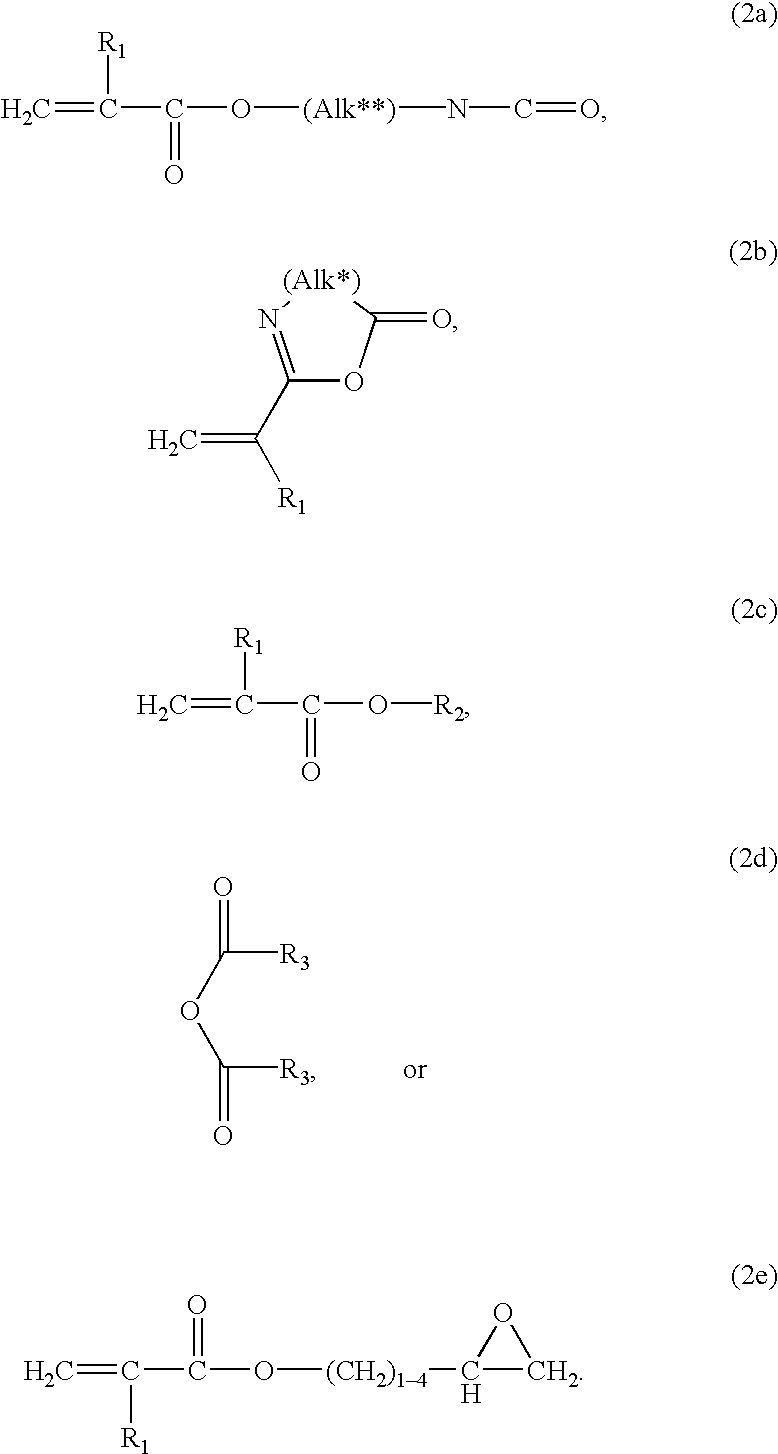Process for surface modifying substrates and modified substrates resulting therefrom
a technology of surface modification and substrate, which is applied in the field of surface modification substrate and modified substrate resulting therefrom, can solve the problems of exceptionally high oxygen permeability, plasma treatment process, and large capital investment in plasma processing equipment, and add to both capital and production costs
- Summary
- Abstract
- Description
- Claims
- Application Information
AI Technical Summary
Problems solved by technology
Method used
Image
Examples
examples
[0129]In the examples, if not indicated otherwise, amounts are amounts by weight, temperatures are given in degrees Celsius. Tear break-up time values in general relate to the pre-lens tear film non-invasive break-up time (PLTF-NIBUT) that is determined following the procedure published by M. Guillon et al., Ophthal. Physiol. Opt. 9, 355-359 (1989) or M. Guillon et al., Optometry and Vision Science 74, 273-279 (1997). Average advancing and receding water contact angles of coated and non-coated lenses are determined with the dynamic Wilhelmy method using a Krüss K-12 instrument (Krüss GmbH, Hamburg, Germany). Wetting force on the solid is measured as the solid is immersed in or withdrawn from a liquid of known surface tension. The molecular weight (“Mw”) for the polymers utilized is set forth as an approximation.
example a
(Layer-by-layer Functionalization for Creating Thick PAAm (Polyacrylamide) Tie Layers)
[0130]a) Iso-propanol-swollen Lotrafilcon A (polysiloxane / perfluoroalkylpolyether copolymer) contact lenses were dipped into a 0.13% PAA solution in water (MW of 90,000, pH of 2.5 by addition of HCl). The lenses were then thoroughly washed with acetonitrile, treated with isocyanatoethyl methacrylate (IEM) and then rinsed with water. The lenses were placed into a 5% acrylamide solution (1 g acrylamide in 20 ml of water). Solution and lenses were heated to 35° C. and nitrogen was purged for 10 minutes. Sodium persulphate was added (40 mg per 20 milliliters of solution). After 45 minutes, the lenses were washed in water overnight and the coating was evaluated.
[0131]b) A branched version of the PAAm-coated lens was then made by initially polymerizing with a 0.5% acrylic acid / 4.5% acrylamide solution. The lenses were then retreated with IEM and then polymerized with acrylamide alone.
[0132]The resulting ...
example b
(Swell Dipped PAA / PAH) Activated Lenses)
[0133]Iso-propanol-swollen Lotrafilcon A (polysiloxane / perfluoroalkylpolyether copolymer) contact lenses were dipped into an aqueous bicomponent solution of PAA / PAH (0.07% PAA with MW of 90,000 and 8.5 PPM of PAH having a MW of 50,000 to 65,000). The lenses were then water-rinsed and extracted with acetonitrile. IEM (2 pipette drops per lens) was used to attach the acrylate groups to the reactive polymeric layer. The lenses were placed into an aqueous 5% acrylamide solution and polymerized as described above in procedure b) of Example A.
[0134]A lubricious coating that was resistant to Sudan black staining was produced. These characteristics did not change after two 30-minute autoclaving cycles. These lenses withstood some finger rubbing abrasion.
[0135]In addition, a branched version was made by co-polymerizing acrylic acid with acrylamide (acrylic acid / acrylamide=1:9) and then washing and extracting with acetonitrile followed by reattaching IE...
PUM
| Property | Measurement | Unit |
|---|---|---|
| mol % | aaaaa | aaaaa |
| mol % | aaaaa | aaaaa |
| mol % | aaaaa | aaaaa |
Abstract
Description
Claims
Application Information
 Login to View More
Login to View More - R&D
- Intellectual Property
- Life Sciences
- Materials
- Tech Scout
- Unparalleled Data Quality
- Higher Quality Content
- 60% Fewer Hallucinations
Browse by: Latest US Patents, China's latest patents, Technical Efficacy Thesaurus, Application Domain, Technology Topic, Popular Technical Reports.
© 2025 PatSnap. All rights reserved.Legal|Privacy policy|Modern Slavery Act Transparency Statement|Sitemap|About US| Contact US: help@patsnap.com



